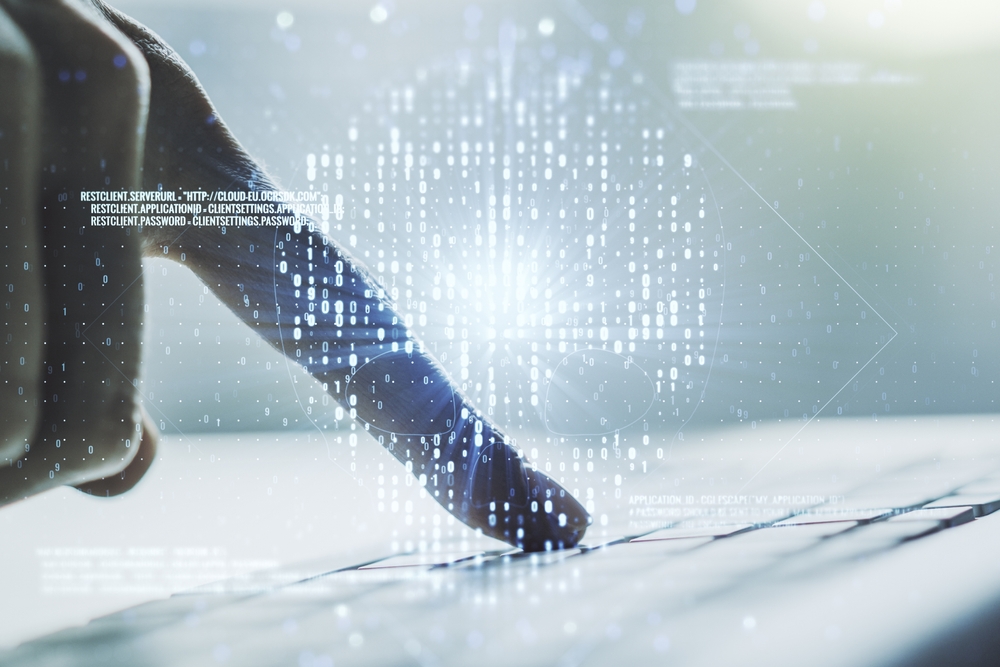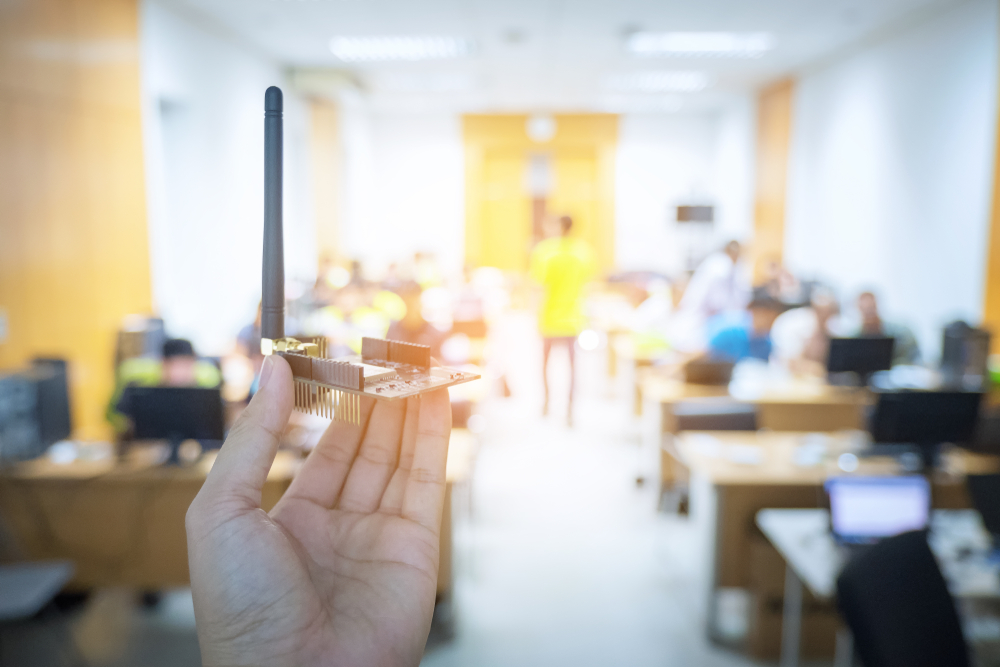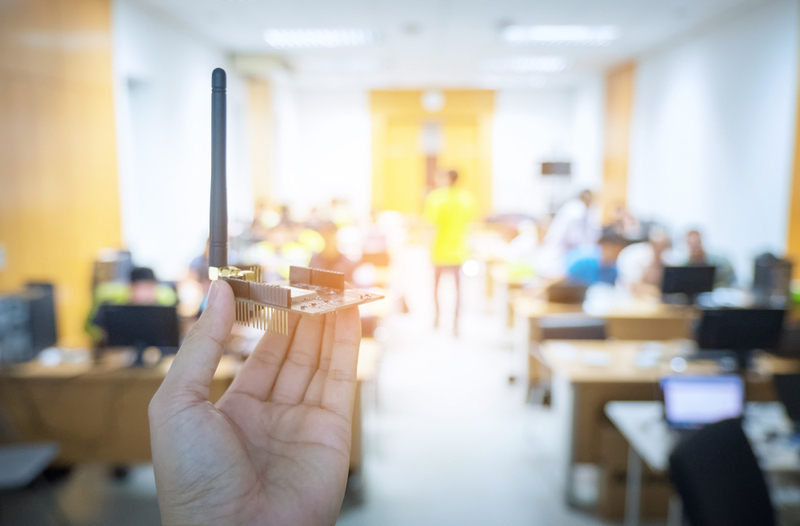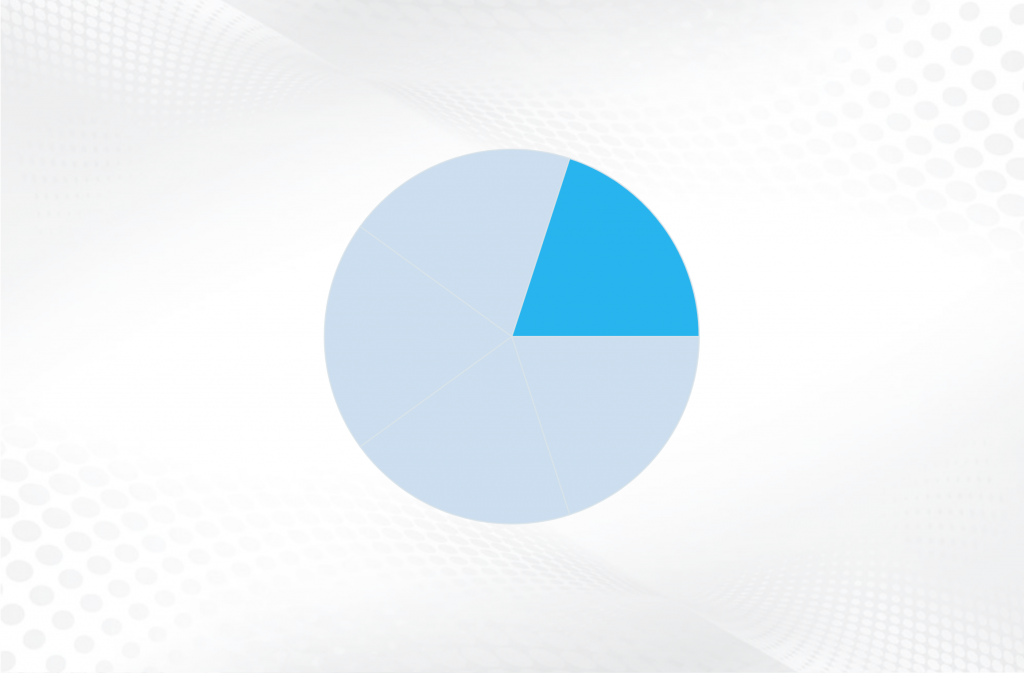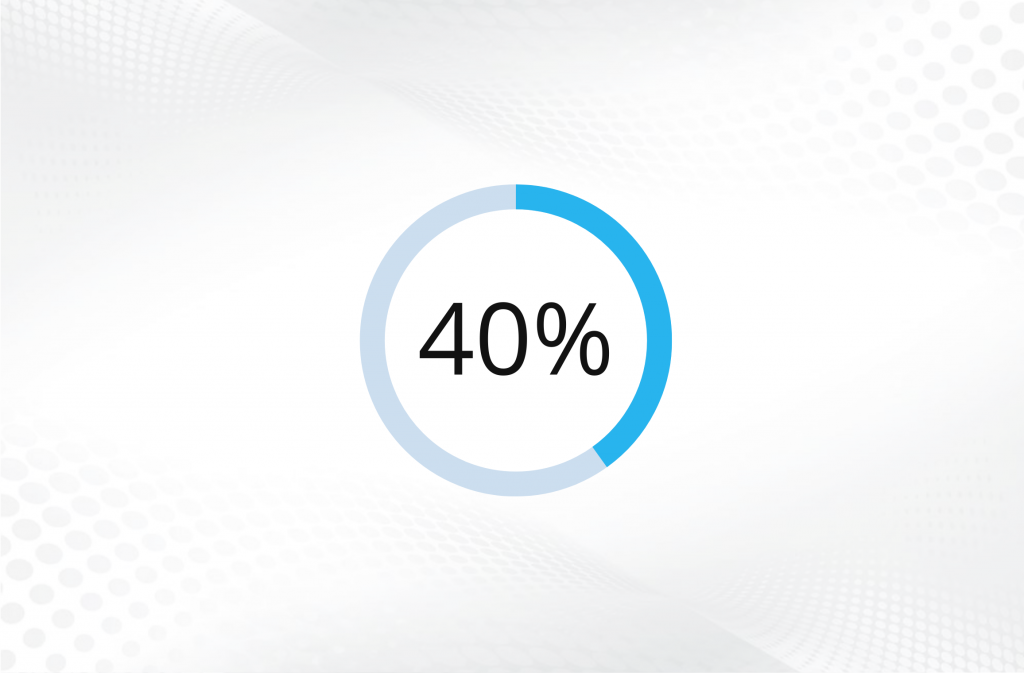IoT-Enabled classroom
The Internet of Things (IoT) refers to a network of interconnected objects that can share and exchange data. Pretty much any object equipped with a sensor or embedded with software can become part of the IoT, and thus there are millions of IoT networks all over the world. Some are small, like the domestic IoT for the use and control of household electronic devices, while others are gargantuan networks within networks of public spaces sprawling over entire cities. The wide use and advent of digital technology has ensured that IoT applications keep growing in variety, ranging from retail to government agencies. One area where IoT could have a huge impact, but is still largely in its infancy, is education.
The education sector is naturally slow to change, but it is impossible to ignore the impact that the new technologies have already had on it. From smart boards and VR to online courses, schools are looking into ways to improve efficiency, accommodate student needs, and make learning active. At the same time, every teacher has struggled with technology at some point, be it a faulty projector, uncooperative systems for online teaching, or loss of data. The IoT can help with all of these issues. The role of the IoT in education is a facilitating one, with the goal of making organisation, administration, data collection, and learning more efficient and relevant. Thanks to its widely applicable nature, the IoT can be utilised in educational institutions with diverse technological assets and needs.
The 2020 pandemic forced many educational institutions to go online. There was an urgent need to switch to remote learning or accommodate students with adjustable classroom models, as in blended learning, or the flipped classroom. The proper use of technology and right educational tools was crucial in this process. The shift, although sudden, has changed education for good. Now most schools are expected to adhere to some form of an adaptable blended learning model, and this can hardly be done without the internet of things. The IoT is seen as the key link in the spectrum of intertwined learning models, from the traditional classroom to online education.
IoT and blended learning
Take for example, the blended learning classroom model. Blended learning is an educational approach that combines online learning with more traditional teaching methods. While students might be issued with online learning methods, they are still expected at some point to be physically present in the classroom. There are different varieties of blended learning, but all revolve around those two core methods: online learning, and classroom presence. Now, the success of the whole process depends on how well the blended classroom can be run from a technological point of view. Imagine, for example, a teacher giving a lecture to a class of in-person and online students. The teacher needs to ensure that their recording equipment runs smoothly, that the lighting is adjusted accordingly, that the projector is turned on, and engage with various other tasks associated with pre-class preparation. This often leaves the teacher with no time for friendly chatter with students, which can be a great catalyst for an engaging class. Lastly, the teacher might need to upload the lecture onto the school-wide learning management system (LMS), and that can take a lot of time. If the teacher has many classes back to back, the upload might have to wait hours until it’s ready and available for everyone to see.
Automation
How can the IoT help with this? Well, in many ways. The key word here is automation. IoT connects all the hardware and software involved in the blended learning classroom model to make an easily controlled network that can be activated with the press of a single button. Of course, the teacher would need to pre-configure all the settings beforehand but, some fine-tuning for certain classes aside, these would remain the same across the board. The central IoT component here is the software that would allow teachers and educators to do so. It would have to be easily integratable with the school’s technology and LMS and fully customisable. Since the blended classroom model itself is very versatile, there are many possible solutions, dependending on student needs. If a class has a large percentage of remote students, the IoT can help with automatically starting the live recording of the lecture and immediately posting it online afterwards. This leaves the teacher with some time to connect with students, as well as more time to prepare for other classes. As a result, students are more engaged. Moreover, the IoT could enhance their online learning by making it easy to collaborate with other students. This would be done through an online hosting service that would be monitored by the IoT software collecting data.
The data thus collected forms a crucial part of the IoT’s significance. It is guaranteed to be accurate and in real time. In the blended learning experience, teachers could monitor what time their students logged into the streaming service, how engaged they were, and how often they used the school’s software.
The concepts described above can apply to any smart classroom. This kind of IoT-enabled smart classroom would have integrated systems that do not only automate certain tasks, but are also capable of engaging and monitoring students. Every little detail counts. For example, the HVAC (heating, ventilation, and air conditioning) systems can be optimised with the IoT to adjust, ever so slightly, to changing needs. At the start of the class, the teacher might want the lighting to be bright so as to keep students interested. During a presentation or when playing a video, the lights should be dimmed. The IoT can keep control of all of these simple, but distracting, tasks.
A smart pen that can help students master new words
C-PEN is a pen scanner that reads the text it scans aloud. Like all pen scanners, it combines patented camera technology and in-system optical character recognition (OCR) software to capture and process printed text. This does not stop at reading the scanned text out loud. C-PEN can also store the scanned text and provide definitions for highlighted words. It also has a voice memo function. This set of features make C-PEN a valuable study assist tool that can help students master new words and definitions, as well as “store” the most important parts of a textbook lesson.
The company C-PEN has also developed a translator pen that “translates and pronounces words based on nine Oxford Academic and English Language Teaching (ELT) dictionaries”. As such, it is very useful for international students (non-native English speakers), helping them do their research and studies faster and more effectively.
The crucial part of any functioning IoT network is the IoT software that connects, controls, and monitors all the different devices in a single network. There is an increasing number of tech companies offering such software for education. For example, Igor, a smart building company, designed a highly adaptable IoT platform called Nexos that’s found good use in education. Nexos is a PoE-based platform that combines cloud analytics with an open API and real-time platform engine to integrate full lighting controls with any IoT device and smart building application. Power over Ethernet (PoE) refers to technology that allows for installation of outside equipment without recourse to AC power. PoE networks are wired, however, and use cables to transmit energy as well as data, which means that they are more reliable than networks using Wi-Fi.
Even the optimised use of lighting can have a positive effect on learning
Nexos is used at Davidson High School in Mobile, Alabama. It has contributed to making Davidson High School a safer place through its IoT-based gunshot sensing technology. Coloured lights and electronic displays are set to automatically warn the students, staff, and the police in case of an intruder. It also has other safety protocols, like in the case of severe weather conditions. As for the classroom, Igor’s IoT platform has incorporated lighting settings which can unobtrusively redirect students’ attention. Mary Claire Wright, computer science teacher at Davidson High, says: “I subtly change the lighting depending on what we have going on. High school students can listen to a lecture for about seven minutes before their attention starts to wander, and you have to do something to reset their clock. I use the lights. It has worked like a charm.”
Similarly, Netherlands-based Indota is a company dedicated to designing smart classroom solutions. One of their services includes an IoT-enabled smart classroom which, unlike the Igor classroom, functions using Wi-Fi. It comes with modules and devices that can control and monitor the classroom’s equipment. For example, there is the ‘Temperature and Humidity Module’, ‘Lighting Control Module’, and the ‘Projector Power Statistics Modules’, whose roles are pretty self-explanatory. Apart from controlling devices such as the projector or air conditioning, these modules also collect data. This data, along with commands for other devices, can be viewed and controlled via the Indota IoT Management Platform. The platform can be controlled through a mobile app. Indota’s IoT classroom also includes an air pollution detection device, which could be quite useful in inner city schools.
Smart, inter-connected cards that collect data
UK-based Magicard, an ID card printer manufacturer, has come up with a card-based IoT solution that improves student safety. They created physical cards that can serve as anything from physical access cards to payment cards. Each issued card has a unique code used for accessing campus facilities and classrooms. They can also keep track of student attendance by notifying the teacher whether the student is in the right class at the right time, or how long they’ve been absent in the case of sickness. Magicard cards can be embedded with a ‘logical access application’ that lets the teacher know how much the student is using the e-learning material and whether they are submitting assignments on time. Finally, they can also store personal and medical data such as blood group, allergies, and emergency contacts.
To address the lack of student interest in learning and lack of practical knowledge in STEM subjects, LocoRobo developed IoT solutions that help students learn visual coding. For example, its LocoDrone device allows students to explore real-world coding through aerial technology. The drone is assembled in the classroom, and can be controlled through a codable drone controller in Java or Python. Similarly, LocoWear is a device that can be strapped anywhere on the body to collect motion data. Using LocoRobo’s products, teachers can immerse students in meaningful project-based learning (PBL) modules, while allowing them to experience the real-world coding behind much of the technology they find fascinating.
A video-based education platform designed specifically for online instruction
New York-based Kaltura is a video cloud platform for education that provides schools with a video creation and management service. It supports “real-time, live and VOD experiences for online and virtual learning”. The Kaltura education suite includes virtual classrooms, the lecture capture feature, support options for webinars, a video portal, and video messaging. It integrates with all major learning management systems and video learning environments (VLEs). Made to be accessible and user friendly, the Kaltura platform is very customisable and it adheres to different accessibility standards, featuring tools like transcription, translation, and automatic chaptering for greater inclusion and usability.
It also features advanced learning analytics, providing schools with insights into user-level heatmaps and learner behaviours. The Kaltura virtual classroom is designed for online instruction and features a full set of tools that support online learning. It includes a whiteboard, breakout rooms, screen sharing options, and real-time notes. In a bid to help teachers engage students, it features live quizzes and a set of editing tools that allow them to capture, optimise, and repurpose video content.
Some of the benefits of using the IoT in education, such as automation, have already been mentioned in this article. Others include: better school management, real-time data collection, increased safety, and energy efficiency.
The IoT improves school management and data collection
Managing an educational institution is not an easy task by any stretch of the imagination.There’s a lot of paperwork to be filled out, proper planning and funds redistribution can be nightmarish due to a tight schedule and even tighter budget, keeping track of supply management, and ensuring the emotional and physical well-being of thousands of students. In such a scenario, having an interconnected, integrated system such as the IoT can work wonders. Not only does it automate certain tasks, but due to its data-collecting capabilities it also provides a holistic overview of the processes involved with education, which altogether makes for a solid decision-making framework. Real-time data collection can help teachers fine-tune their teaching methods. A lot can go unnoticed in the classroom, especially in remote learning classes, and having a system that can notify the educator if and why a certain student is struggling can lead to much better performance from both the teachers and students. At higher levels, school administration and ministries can look at the data to improve the efficiency of testing and grading, or plan ahead for a more substantial change in their approach to teaching.
The IoT can create a safer learning environment
IoT technology has many security applications that schools, colleges, and university campuses can benefit from. From video monitoring tools that can identify suspicious individuals, to student escort drones that ensure that those students who walk home get there safely, the IoT can reliably increase safety within educational institutions. Needless to say, having a safe learning environment is one of the cornerstones of a solid education. A safe environment is also a great conduit for learning, and the IoT can make the lives of students with (learning) disabilities much easier.
The IoT saves energy
Finally, as seen in the case of Davidson High School, the IoT can highly optimise the use of electrical energy. By controlling the HVAC systems, the IoT ensures energy and water consumption efficiency. For example, just having a simple system in place that can turn off and adjust lighting depending on the number of students in the classroom, weather, and time of day can go a long way in reducing operating costs. At large universities, the IoT can be utilised to monitor and control energy consumption across the campus. These can then be automated on a larger scale to ensure efficiency. With IoT occupancy sensors, teachers and students can keep track of free conference and study rooms, or even library computers to smooth the reservation process.
Although IoT in education can make teaching easier, it still comes with its own share of problems; or rather, there are a number of considerations that need to be taken into account if the IoT is to gain a more prominent role within education. Some of these are concerned with technology in general, while others are more specific to the IoT.
The implementation of the IoT can be hampered by unequal access to technology among students
Technology is not available to everyone equally. Implementation of the IoT that relies on students’ use of technology at home, such as in the flipped classroom model, might lead to tech disparity, not only between students, but also between schools or school districts. To combat this, schools would have to issue devices to students, which might lead to greater costs. This is another problem with IoT in education: it costs money. Apart from the costs of buying and installing all the necessary equipment, schools would have to pay for its maintenance, which altogether incurs greater costs for the school. Bound with this is the additional education for teachers, or at least staff designated with keeping the IoT system running. However, holistically speaking, if educational institutions were to invest money in devices with longer lifespans that require minimal attention and use royalty-free software, the IoT will pay off in the long run.
The IoT can be vulnerable to cyber attacks and data theft
Another big problem associated with the use of the IoT in the classroom is concerns about security and privacy. Since the IoT collects and stores various forms of digital data, this puts educational institutions at a higher risk of being the target of a cyber attack. Moreover, some parents might not take lightly to having their children digitally ‘profiled’ by artificial intelligence-powered software. To ensure data privacy, educational institutions will have to invest in protective measures, which might require a highly skilled tech team. This also costs money.
But overall, IoT has already proved its worth in education. The possibilities are almost endless, with the biggest challenge being the construction of a meaningful framework within which the IoT can have the most impact. Obviously, some applications of IoT are more suited to school management and maintenance, rather than directly impacting student learning (think HVAC systems). But even then, a holistic approach is implicit in any use of the IoT. Money saved by smart usage of power through the IoT can be used to invest in better learning materials. As for the classroom itself, the IoT helps teachers as much as it helps students. Its role as a learning facilitator puts it in a unique position to collect meaningful and relevant data. Having such data in real time can work wonders for teachers and school administrators, as it allows them to conduct more nuanced and empirically informed planning and fine-tuning of the curriculum.
